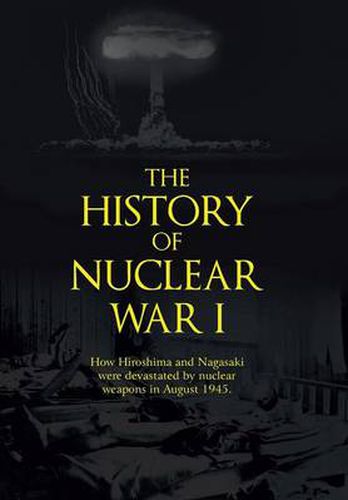Readings Newsletter
Become a Readings Member to make your shopping experience even easier.
Sign in or sign up for free!
You’re not far away from qualifying for FREE standard shipping within Australia
You’ve qualified for FREE standard shipping within Australia
The cart is loading…






This title is printed to order. This book may have been self-published. If so, we cannot guarantee the quality of the content. In the main most books will have gone through the editing process however some may not. We therefore suggest that you be aware of this before ordering this book. If in doubt check either the author or publisher’s details as we are unable to accept any returns unless they are faulty. Please contact us if you have any questions.
In August of 1945, some 200,000 people died at Hiroshima and Nagasaki from two nuclear weapon explosions during Nuclear War I. This book details the following historical events that led to Nuclear War I: Fermi and Szilard worked on nuclear fission at Columbia University in 1939. Plutonium-239 was discovered in 1940. Einstein informed President Roosevelt of possible German uranium bombs. Fermi built the world's first nuclear reactor in 1942, to manufacture plutonium. General Groves and Oppenheimer led the U.S. effort to build atomic bombs as part of the Manhattan Project. Soviet spies infiltrated the Manhattan Project. The Trinity Test on July 16, 1945, was the world's first nuclear explosion. The Pope (1943) and many scientists spoke against the use of nuclear weapons. Truman became President on April 12, 1945 and first learned of the Manhattan Project. The B-29 bomber was selected to deliver atomic bombs to Japan. On August 6, 1945, an atomic bomb (uranium) was exploded over the Japanese city of Hiroshima. For three days (August 6th to the 9th) hope abounded that Japan would surrender but preparations for more nuclear war continued. On August 9, 1945, an atomic bomb (plutonium) was exploded over the Japanese city of Nagasaki. Emperor Hirohito survived a coup by angry military officers and Japan surrendered on August 14, 1945.
$9.00 standard shipping within Australia
FREE standard shipping within Australia for orders over $100.00
Express & International shipping calculated at checkout
This title is printed to order. This book may have been self-published. If so, we cannot guarantee the quality of the content. In the main most books will have gone through the editing process however some may not. We therefore suggest that you be aware of this before ordering this book. If in doubt check either the author or publisher’s details as we are unable to accept any returns unless they are faulty. Please contact us if you have any questions.
In August of 1945, some 200,000 people died at Hiroshima and Nagasaki from two nuclear weapon explosions during Nuclear War I. This book details the following historical events that led to Nuclear War I: Fermi and Szilard worked on nuclear fission at Columbia University in 1939. Plutonium-239 was discovered in 1940. Einstein informed President Roosevelt of possible German uranium bombs. Fermi built the world's first nuclear reactor in 1942, to manufacture plutonium. General Groves and Oppenheimer led the U.S. effort to build atomic bombs as part of the Manhattan Project. Soviet spies infiltrated the Manhattan Project. The Trinity Test on July 16, 1945, was the world's first nuclear explosion. The Pope (1943) and many scientists spoke against the use of nuclear weapons. Truman became President on April 12, 1945 and first learned of the Manhattan Project. The B-29 bomber was selected to deliver atomic bombs to Japan. On August 6, 1945, an atomic bomb (uranium) was exploded over the Japanese city of Hiroshima. For three days (August 6th to the 9th) hope abounded that Japan would surrender but preparations for more nuclear war continued. On August 9, 1945, an atomic bomb (plutonium) was exploded over the Japanese city of Nagasaki. Emperor Hirohito survived a coup by angry military officers and Japan surrendered on August 14, 1945.